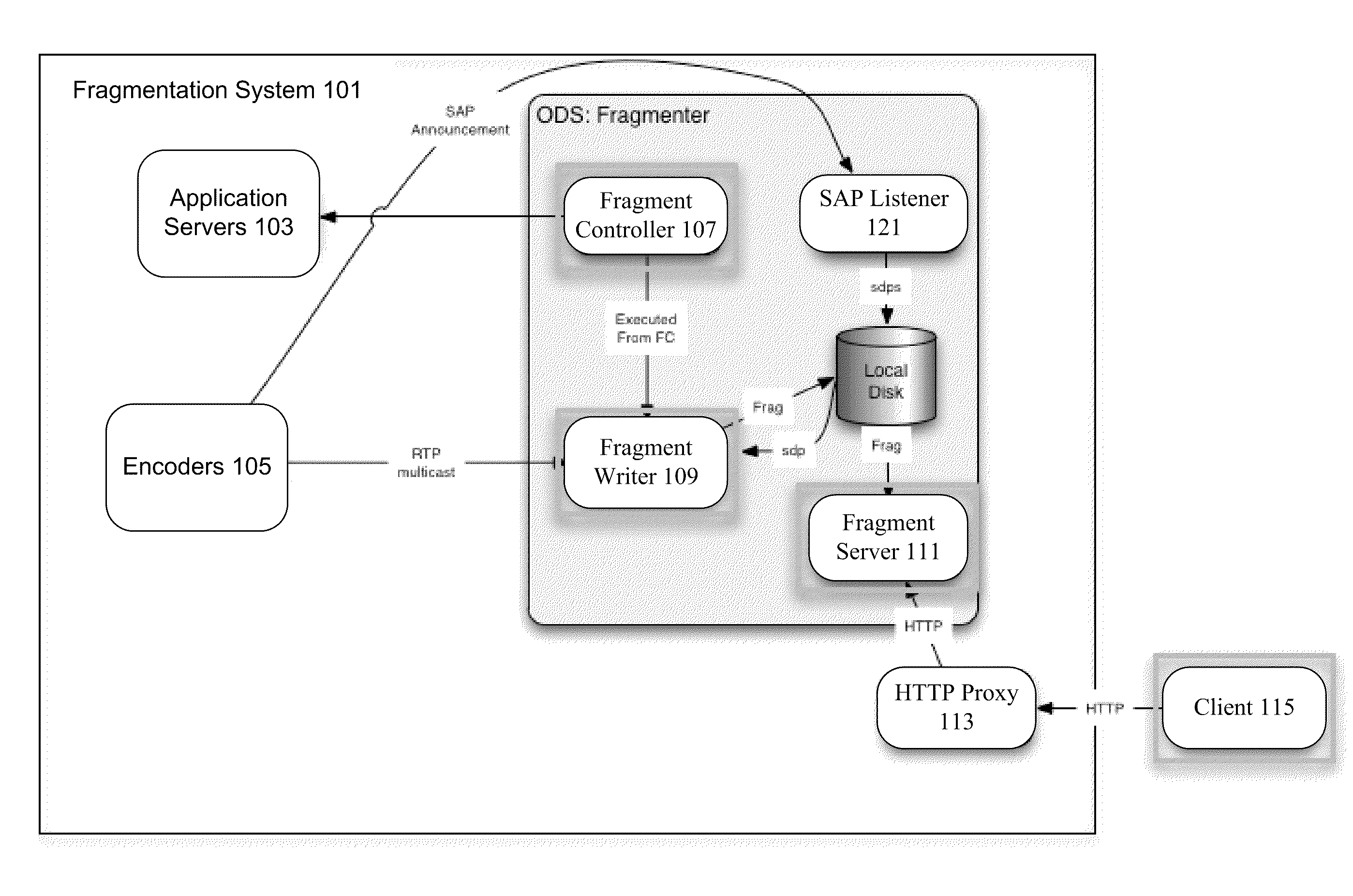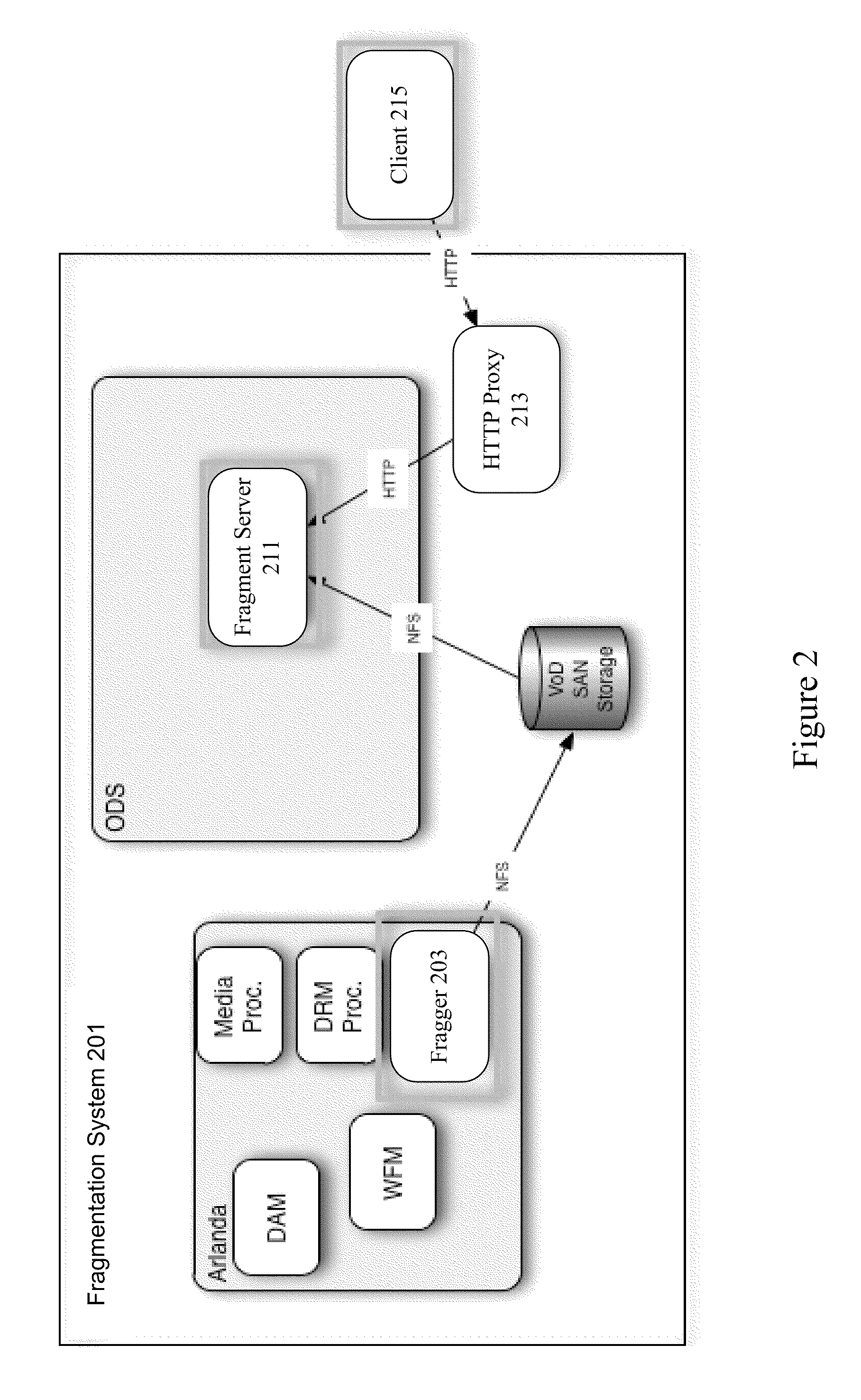Quality adjustment using a fragmented media stream
a technology of quality adjustment and media stream, applied in the direction of selective content distribution, color television with bandwidth reduction, television system, etc., can solve the problems of disruptive retransmission of lost frames, limited conventional techniques and mechanisms for transmitting real-time media
- Summary
- Abstract
- Description
- Claims
- Application Information
AI Technical Summary
Problems solved by technology
Method used
Image
Examples
example embodiments
[0019]A variety of mechanisms are used to deliver media streams to devices. In particular examples, a client establishes a session such as a Real-Time Streaming Protocol (RTSP) session. A server computer receives a connection for a media stream, establishes a session, and provides a media stream to a client device. The media stream includes packets encapsulating frames such as MPEG-4 frames. The MPEG-4 frames themselves may be key frames or differential frames. The specific encapsulation methodology used by the server depends on the type of content, the format of that content, the format of the payload, and the application and transmission protocols being used to send the data. After the client device receives the media stream, the client device decapsulates the packets to obtain the MPEG frames and decodes the MPEG frames to obtain the actual media data.
[0020]Conventional MPEG-4 files require that a player parse the entire header before any of the data can be decoded. Parsing the e...
PUM
 Login to View More
Login to View More Abstract
Description
Claims
Application Information
 Login to View More
Login to View More - R&D
- Intellectual Property
- Life Sciences
- Materials
- Tech Scout
- Unparalleled Data Quality
- Higher Quality Content
- 60% Fewer Hallucinations
Browse by: Latest US Patents, China's latest patents, Technical Efficacy Thesaurus, Application Domain, Technology Topic, Popular Technical Reports.
© 2025 PatSnap. All rights reserved.Legal|Privacy policy|Modern Slavery Act Transparency Statement|Sitemap|About US| Contact US: help@patsnap.com



